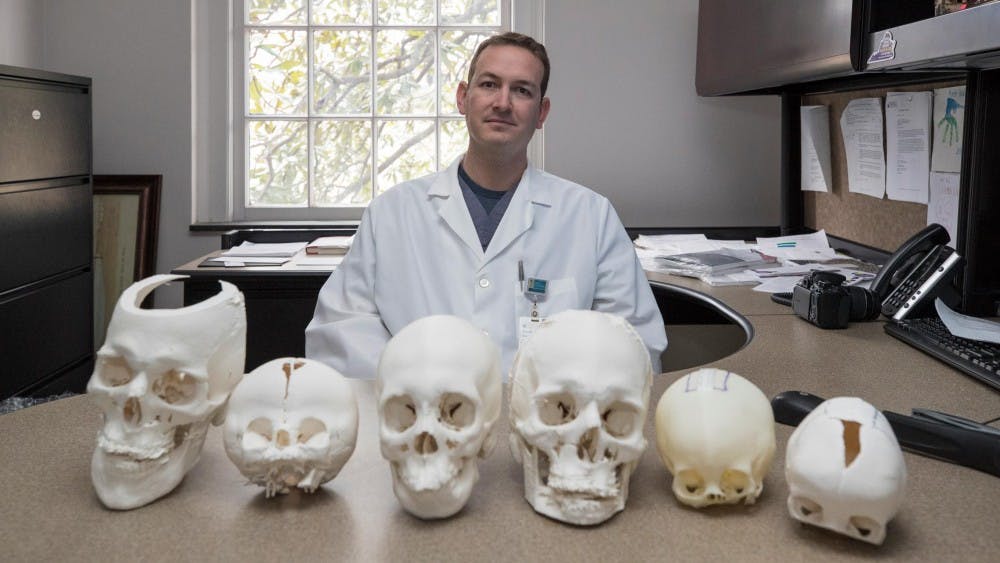Imagine living in a world where people had 3D-printed bones and organs. At the University, plastic surgeon Dr. Jonathan Black and Design Lab engineer Dwight Dart are exploring the intersection between medicine and engineering to one day accomplish just that.
Black’s work as a surgeon involves working on challenging cases, including kids with complex problems. However, he has been using a new emerging technology ⏤ 3D printing skulls ⏤ to prepare for surgery and combat these challenges.
This technology provides a means for surgeons to prepare for difficult surgeries, allowing them to practice on a model with a patient’s exact anatomy. This method permits them to plan the surgery procedure precisely, which then improves patient outcomes and treatments.
“I think [3D printing] is going to allow us … to plan a patient-specific operation and anticipate the exact abnormality we are going to see,” Black said.
Being able to practice on an identical model has allowed surgeons to complete their operations faster and with less patient trauma. It also allows surgeons to prepare for problems that might arise during the surgery and decide how to accurately handle them.
Black took on this technology not only to prepare for surgery but also to teach students and residents surgery methods.
“I treat patients that have complex problems and they tend to be kids,” Black said. “And a frequent model to teach students and residents is on a cadaver [to] show them different aspects to surgery. But no cadaver exists to what I’m treating because they tend not to be pediatric patients and don’t have the pathology I am treating. So, I thought if we took the scan that showed their problems, I could print it out and use it as a model.”
The skulls are printed by Dwight Dart in the Department of Mechanical and Aerospace Engineering. Black and Dart use computed tomography and magnetic resonance imaging scans to create images of patients’ skulls. These machines are then programmed to print life-size models that have the exact shape of the patient’s skull.
“[The models] are exactly like a human’s geometry because of the software we are using and the technique we use,” Dart said. “We take a CT or an MRI scan and bring that into the software … We tell it to clean all that stuff up and delete anything we don’t want to use … Once we 3D print, it’s the exact patient’s geometry.”
The skulls are exactly to scale and can take anywhere from 12 to 40 hours to print, depending on if its a child’s or adult’s skull. The skulls are made out of Acrylonitrile-Butadiene-Styrene plastic.
This technology has helped Black prepare for a variety of surgeries, the most common being reshaping the skull, caused by craniosynostosis, a disease that alters the normal growth pattern of the skull.
The models have also been used to treat Short Le Fort 1 lengthening, a type of upper jaw lengthening, and Mandibular Distraction, a lower jaw lengthening.
In the past few years, technology and medicine have come together to create many new solutions to problems. Looking to the future, this intersection of 3D printing and medicine may only be the beginning of surgical innovations.
With 3D printed organs, the problem of donor shortage for transplant organs could be diminished as patients would no longer have to wait for donors. This is a potential innovation of 3D printing, in addition to providing more accurate and planned surgery, reduced surgery time and new teaching methods in residency.
“This is the tip of the iceberg of where 3D printing is going to venture into medicine,” Dart said. “We’re going to see … 3D printers that actually print bones … And that’ll be the first stage of where we’ll start implementing 3D printed stuff, and it will go all the way up to the point in 10-30 years we will see 3D printed organs we have transplanted in.”







